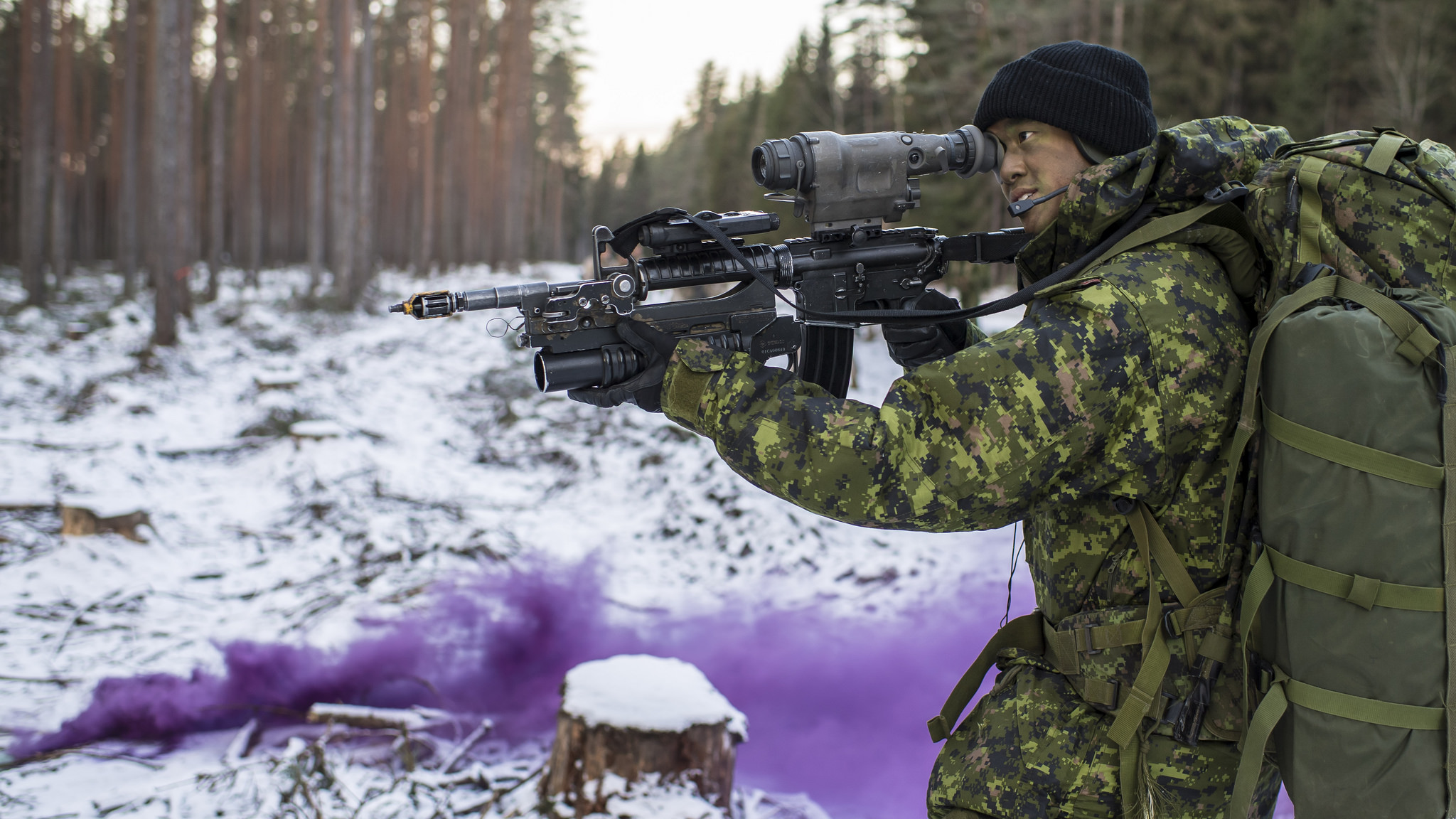
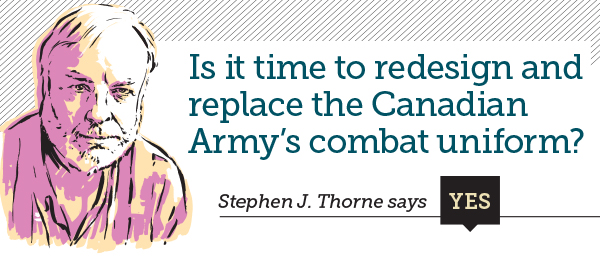
Back in 2002 and into 2003, a tempest swirled in an Ottawa teapot over the combat fatigues Canadian troops were wearing to a war 10,600 kilometres away.
Here were our soldiers, God forbid, wearing green in the arid climes of Afghanistan. The uniforms were an embarrassment, declared the pundits and politicians, none of whom had set foot in Afghanistan or anyplace remotely like it.
Their case, countered one Afghanistan veteran, “was more political than it was tactical.”
The fact was, at least half the armies of the coalition—Middle East included—were wearing green.
And, in a stroke of serendipity, the Canucks’ crisp new fatigues faded after a couple of washings. The diluted green, combined with the powdery desert dust, proved ideal camouflage in much of the Afghan terrain, with its light-beige earth, red-grey rock and green scrub brush.
American helicopter pilots who provided top cover and shuttle and supply services remarked on how difficult it was to pinpoint the Canadians ensconced in the mountains of Tora Bora and the Shah-i-Kot Valley. Far more difficult, they said, than it was finding American troops in their desert cam. Furthermore, the Canadian uniforms were all but invisible at night, whereas the light U.S. fatigues stuck out like sore thumbs.
The Canadian uniforms were, in fact, a sartorial triumph, even if by chance, and the soldiers felt secure wearing them. The Canadians eventually got their desert fatigues, which had been coming all along. These were darker than the U.S. kit, and proved effective for the evolving environments in which the Canucks would work.
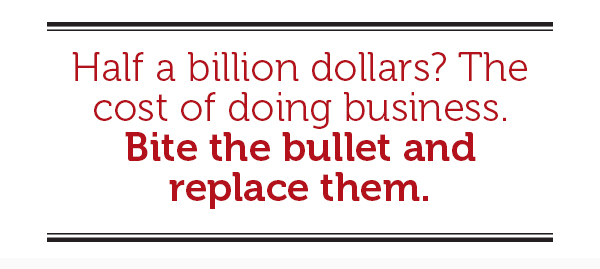
Over the ensuing years, the fatigues were adapted and re-engineered to a uniquely Canadian configuration. Pockets were repositioned to conform to ballistic vests. Pants could be sealed and knee pads inserted. The shirt was tailored, the collar trimmed. All on the advice and experience of soldiers in the field.
But they still fade. Indeed, the difference between fresh Canadian fatigues and well-used ones is so stark, you would question whether they are even the same uniform.
Fatigues are like food rations. They have to be good, effective and comfortable, or you’re going to have an unhappy army. Clothing is fundamental to morale and operational effectiveness. That’s true of most trades and professions.
The point is, troops—and pilots—know better than anyone what works. So, if Canadian soldiers say they need new uniforms, they should have them.
Faded fatigues may have worked well then, but they’re not acceptable now. As the Chief of the Defence Staff recently observed, Canadian soldiers should not be wearing ratty uniforms. Canada’s current Mali mission had barely begun and the desert cam was already weathered.
There are advantages to buying the American MultiCam, if Ottawa bureaucrats will allow it. It’s a one-pattern-fits-all design, good for all environments. With minor modifications, it would be readily available and possibly a bargain, requiring minimal research and development. In the field, there would be no mistaking who’s the good guy.
Combat fatigues have no place in politics. They’re a matter of fundamental respect, comfort, practicality and, yes, security for our soldiers. Half a billion dollars? The cost of doing business. Bite the bullet and replace them.
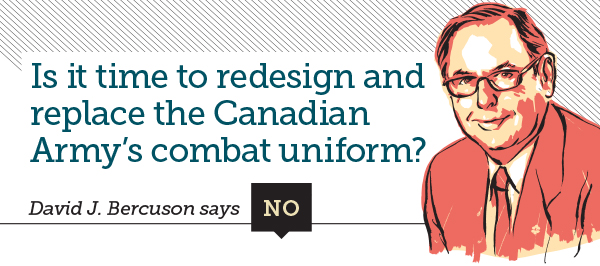
The Ottawa Citizen reported last summer that Chief of the Defence Staff General Jonathan Vance wants to replace the venerable Canadian Disruptive Pattern (CADPAT) uniform with new camouflage using an American pattern known as MultiCam. The project is estimated to cost as much as $500 million or about the price of eight F-35 fighter jets. We don’t need new camo and we don’t need to spend half a billion dollars to acquire it.
The Canadian Forces acquired Temperate Woodland CADPAT in the late 1990s to replace the old dark-green uniforms that Canadian soldiers had worn through the Cold War. At the same time, a desert or tropical CADPAT was also ordered which, with the exception of the first deployment of Canadian soldiers to Afghanistan in 2002, was worn all the rest of the time we were deployed there. Canadians in Mali are wearing the same desert CADPAT that was worn in Afghanistan.
When the digital design was first introduced, it was way ahead of most camouflage designs used by the United States and other NATO countries. Specially designed to make it much harder for enemy eyes to discern against green or desert landscapes, it gave Canadian soldiers an edge in the field in comparison to our allies and our enemies.

Soon after, the United States adopted digital camouflage in a large variety of basic tones for different branches of the its armed forces. In fact, there were so many varieties of U.S. camouflage that Congress mandated that the military cut back on the number of different patterns it was using and standardize three or four basic ones.

When it comes to defence spending, Canada isn’t in the same league as the United States. Can we find half a billion dollars to reclothe our soldiers? The dollars are scarce and every dollar spent on one project is a dollar that can’t be spent on another. Complaints about how much the F-35 was going to cost Canada effectively ended that project, even though some 13 other countries went ahead with their orders and several are, today, actually integrating the new aircraft into their fleets. Canada won’t make up its mind for at least another four years! But we have money for new uniforms?
The CADPAT that Canada adopted in the late 1990s is a pretty good pattern and not nearly obsolete. It was way ahead of its time then and it is still the equal of now-ubiquitous digital camouflage patterns being used by other nations. A truly effective camouflage uniform would certainly help keep our soldiers a bit safer, but what other kit wouldn’t they receive because of it?
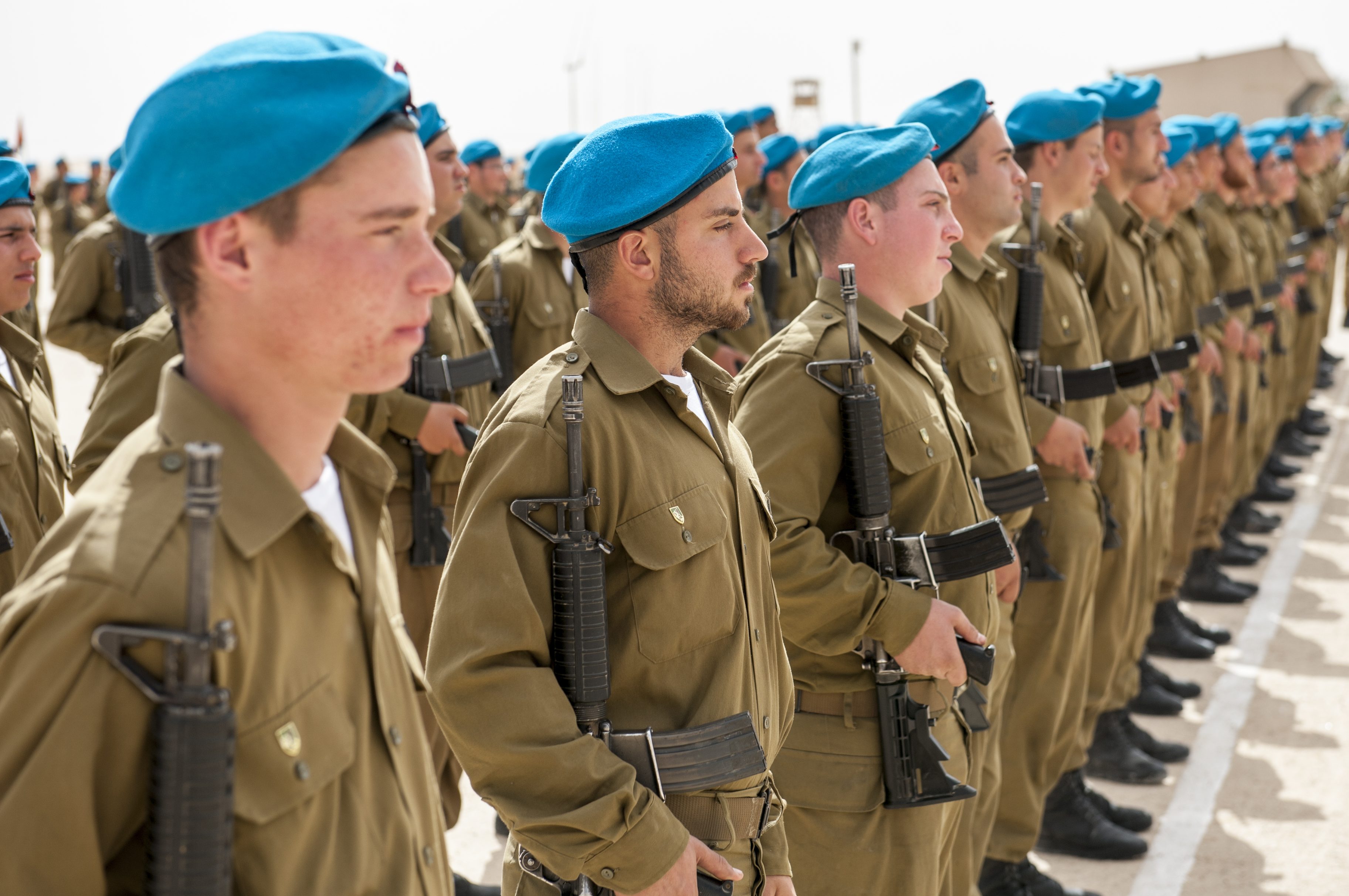
Perhaps DND ought to look at the Israel Defence Forces. Having fought many wars over the past 50 years or so, the IDF uses the same single-colour brownish green uniform it has been using for at least four decades. Boots have changed, helmets have changed, camouflage netting has changed, but they are still wearing the same old uniform they have worn for years. Israel sees no need to waste money on new uniforms. Why do we?
Advertisement












